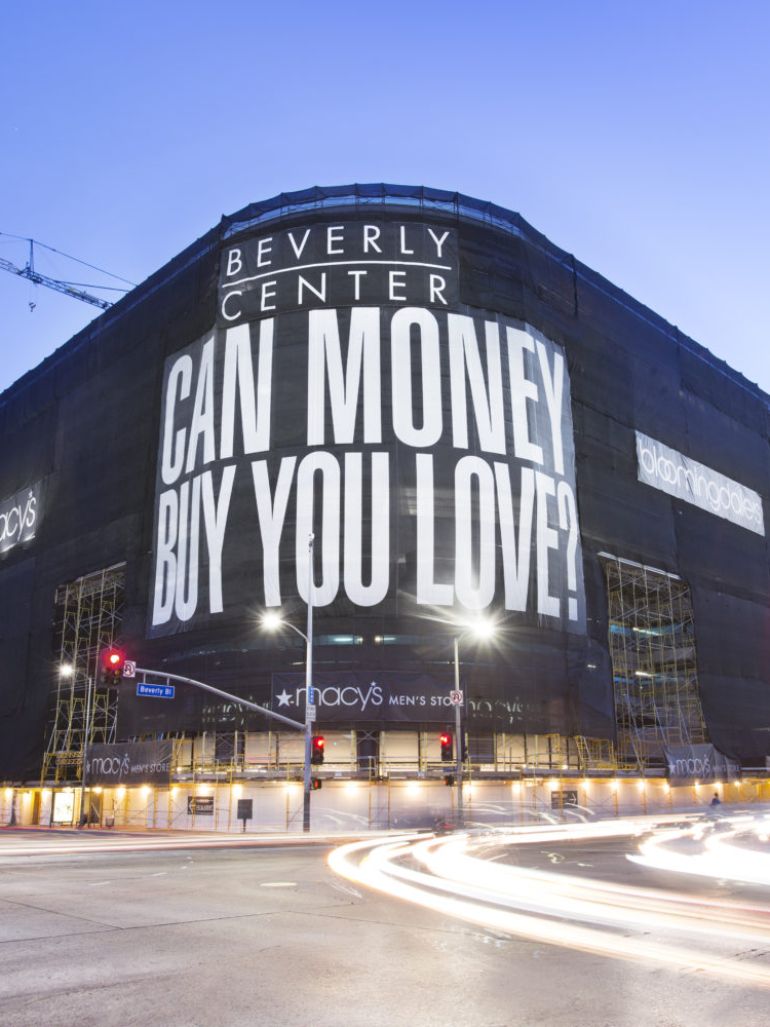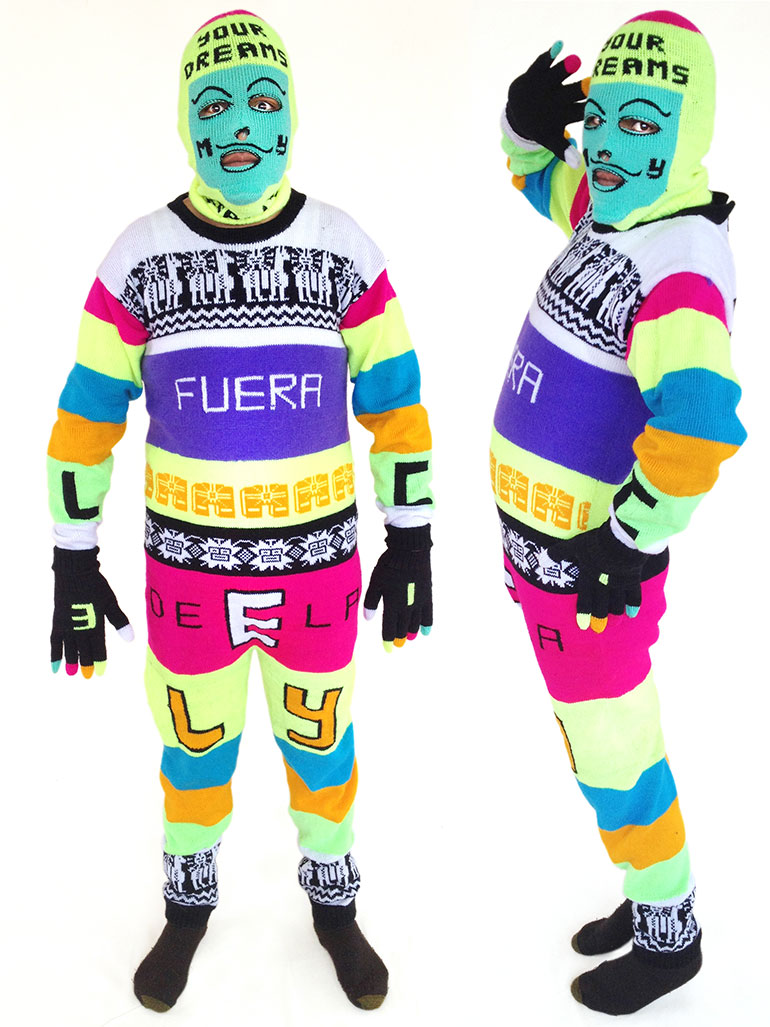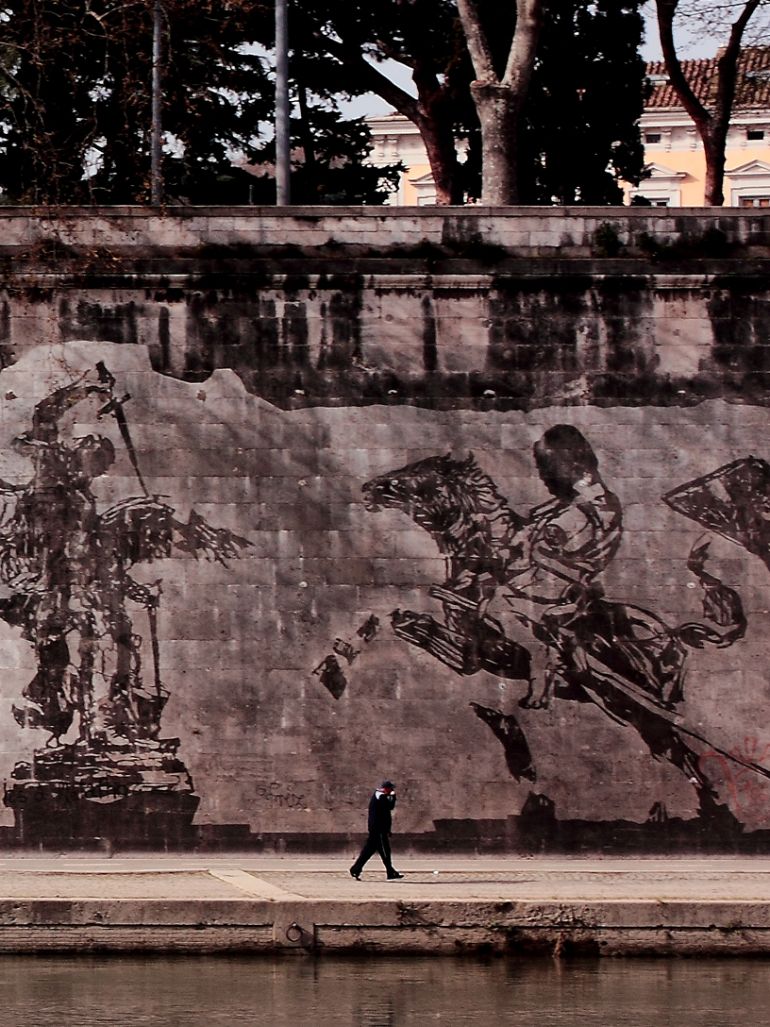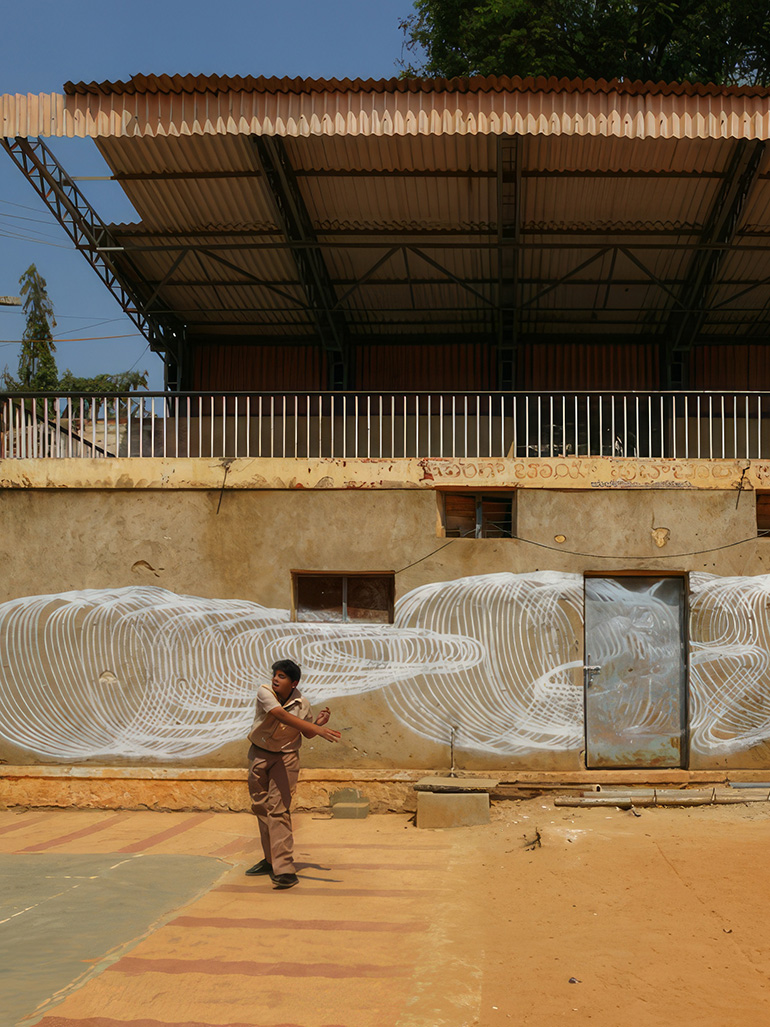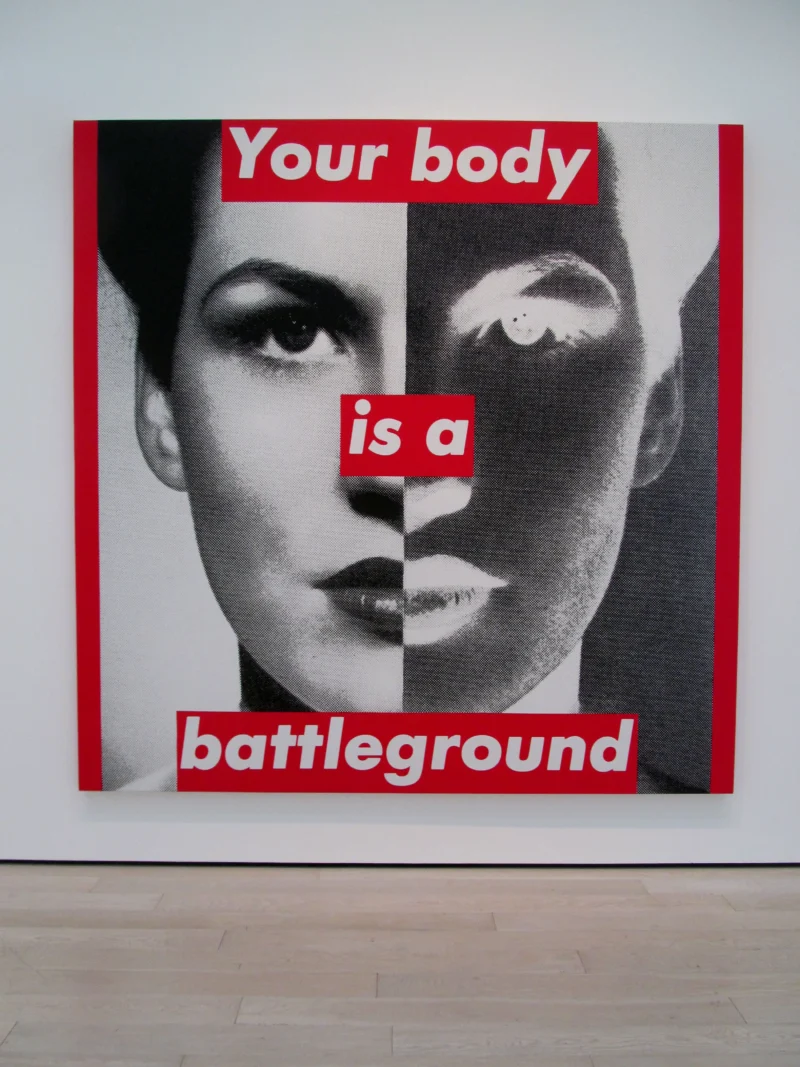
Introduction
Untitled (Your Body is a Battleground) is an iconic 1989 silkscreen 1 portrait made by artist, feminist and activist Barbara Kruger 23.
Though the poster was meant for the pro-choice march on April 9th, 1989, in DC, the portrait is now used mainly to voice the artist’s own opinion about gender inequality. The piece is much more relevant in today’s society, where it controls the way we view and treat women’s bodies.
Kruger combined computer-generated black and white images from the 1950s, with contrasting white Futura Bold titles 45 on red panels in buildings and billboards 6 to bring to light the issue of inequality.

Background
She created it for the Women’s March on Washington in response to numerous anti-abortion laws that were undermining Roe v. Wade. This ruling enabled the Constitution of the United States to protect a pregnant woman’s liberty to have an abortion without excessive government restriction.
The artist started to use old images from mid-century newspapers and publications in 1979, with words pieced together on top of them. By the time she was creating Untitled (Your Body is a Battleground), Kruger was already an established artist. She was known for her distinct mature style and had produced a string of works mainly in black and white, with politics, gender equity, mass media and advertising as her themes.
The font
The poster has a woman’s face that is vividly intersected in black and white, staring directly at the camera, resolute. Using a determiner “Your”, Kruger connects the viewer and focuses the attention on the hot topic of reproductive rights. Kruger said about her poster:
I think I developed language skills to deal with the threat. It’s the girl thing to do – you know, instead of pulling out a gun.
Kruger is quoted in the book “Love for Sale” saying that her work is inspired by stereotyping, a “domain as that of ‘figures without bodies.'” And in this artwork, the artist depicts how women are stereotypically viewed by society – the woman is a product of society and no longer an individual. By including the words “your body is a battleground,” Kruger critiques the original image’s intention, which seems to be a magazine photoshoot.
The face
As the stark line dissects the image of the poster in two, your attention is drawn instantly to the faultless symmetry of the face: The eyebrows are precisely the same as if one is a reflection of another. The viewer interprets this image as a representation of society, a stereotypical image of how women should look like – a mere object of beauty.
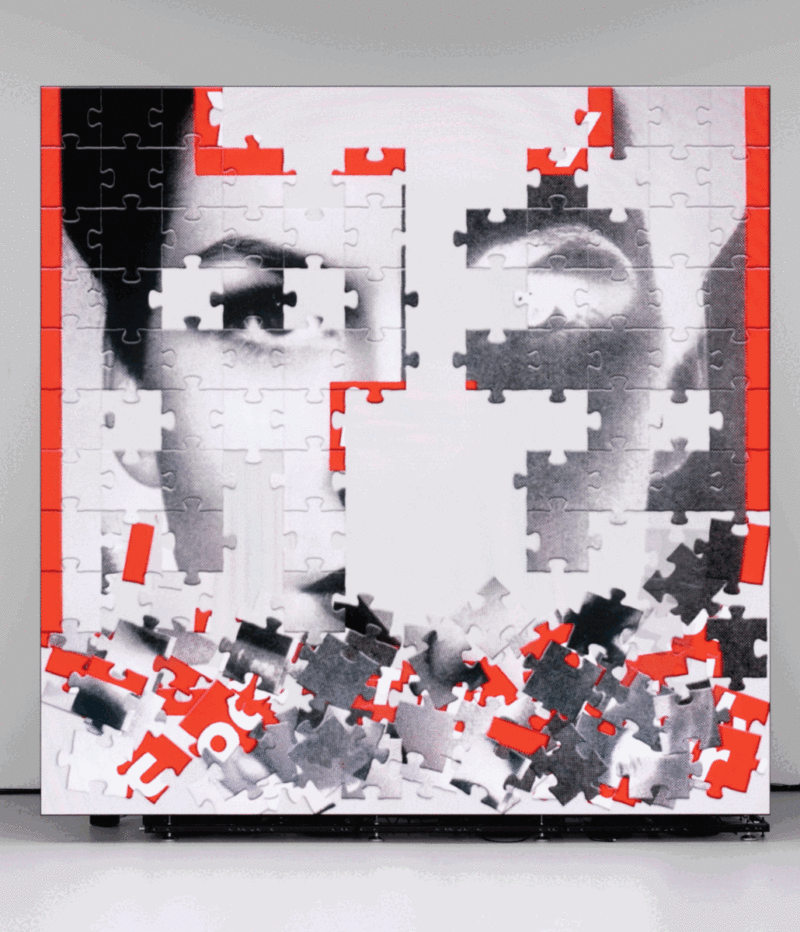
Composition
Initially, the piece appears to split the reproductive health discussion into two sides: Those against the woman’s right to choose and those who support it, shown by the negative and positive rendition of the image. But the caption “Your body is a battleground” denotes just how the fight for choice has an entirely different nature than political battles.
When it comes to abortion, the fight for the woman’s freedom to choose transpires outside her body yet directly affects her. In a way, her body is turned into a combat zone that she both struggles for and in.
Considering the feminine stereotypes in our society, the dichotomies of the message becomes even bigger. Women must fight to be seen as people now that the male gaze has turned them into objects. In this poster, instead of being objectified, the viewer becomes mindful of the extreme feminist struggle 78.
By making one side of the image positive and another negative, the artist depicts the pro-choice and pro-life; women versus patriarchal society; women versus stereotypes. In other words, Kruger tells women to always be on the lookout.
Analysis
Untitled (Your Body Is a Battleground) is a powerful artwork that forces the audience to address the plight that women face in society. However, this image would probably not have represented such a powerful and significant political message without the artist’s captions.
The artwork requires effort and thinking from the viewer to understand the concept and irony that it carries. The viewer must also be ready to look into the work, analyze, and reflect on their personal opinion on the issues that it addresses.
The piece is an individualized illustration of Barbara Kruger’s personal opinion, her dissent against the transgression of women’s rights, the effect of patriarchy, control as well as stereotyping and increasing consumption. Aside from being a form of protest, the artwork also calls for a reaction from the general public to these issues.
Kruger says about this work:
I’m fascinated with the difference between supposedly private and supposedly public and I try to engage the issue of what it means to live in a society that’s seemingly shock-proof yet still is compelled to exercise secrecy.
Barbara Kruger understands that being in modern society as a woman is challenging, with women judged more often by their physical attributes. It is still a constant battle with self-image and appearance. While few can break away from this vicious circle, most women get stuck in this rut for almost the entirety of their lives.
Polish version
After Poland’s recent (2020) court ruling that would impose a near-total abortion ban in the country, TRAFO – the Center for Contemporary Art in Stettin – has organized an installation of Barbara Kruger’s Polish version of the poster Untitled (Your body is a battleground) as a form of protest that goes hand in hand with recent demonstrations in and around Poland.
The posters are placed on the center’s facade as well as around Stettin. In 1991, Ujazdowski Castle, Centre for Contemporary Art in Warsaw, produced the Polish version.
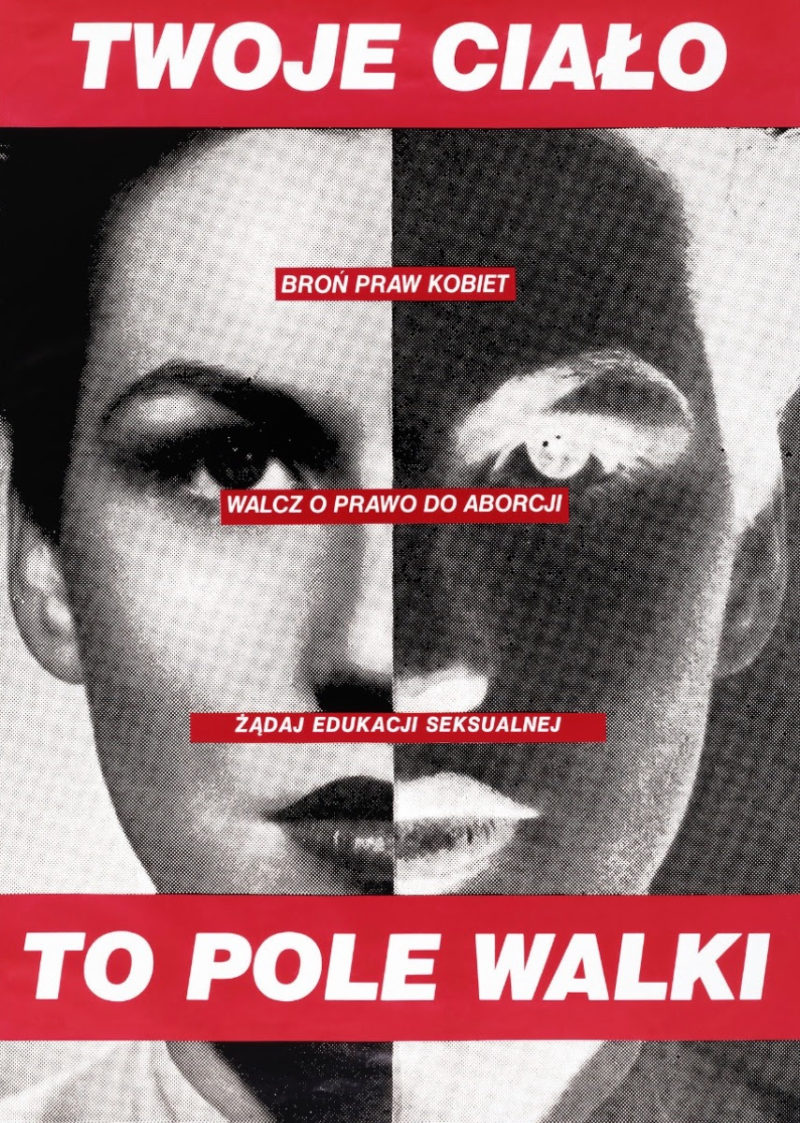
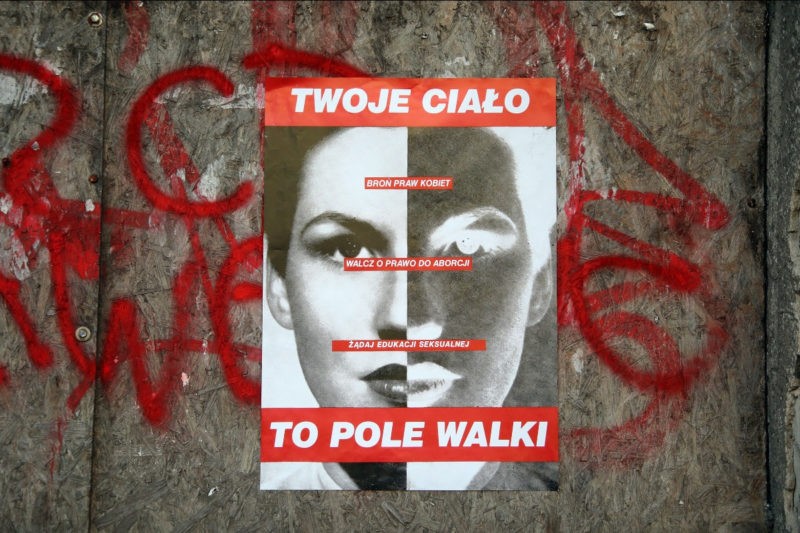
Conclusion
Barbara Kruger’s art always stands for something, gives a viewpoint about issues affecting society, or relays a strong message. Your Body is a Battleground communicates a powerful message for the viewer to ponder, even if for only a split second.
Through this piece, Kruger speaks about feminism and the rights of women. Just like her previous works 910, the artist continues the usage of a combination of black and white imagery and red blocks of texts that are derived from her background in media, art and design, and career in designing.
This piece visually personifies the image of a woman who abides by all the assigned aesthetic standards. Yet, it is the same image in which the flame of controversy and passion for fighting for her own rights are burning. The two halves of the art carry various meanings: black and white, angelic and devilish, humble and belligerent.
